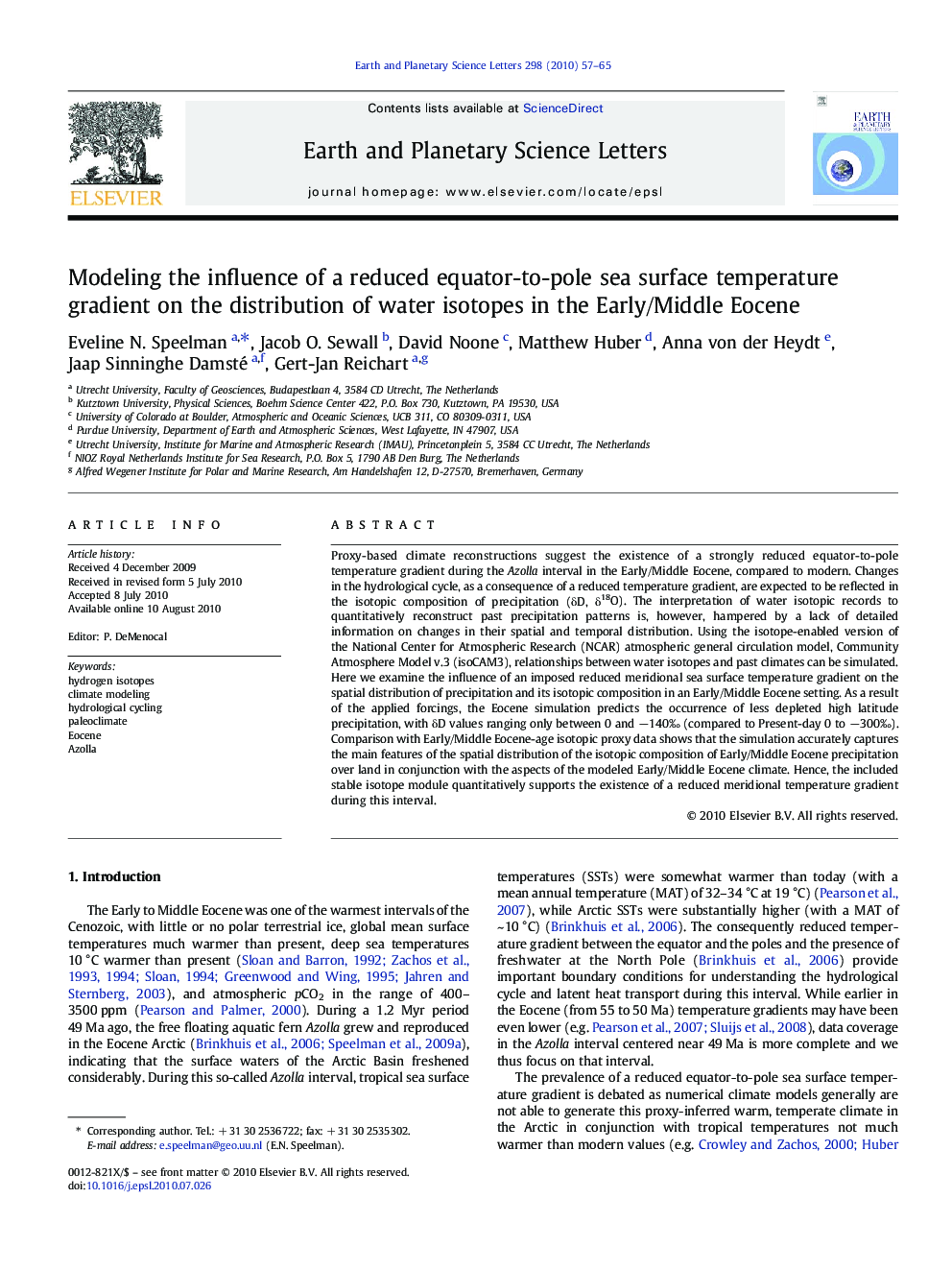| Article ID | Journal | Published Year | Pages | File Type |
|---|---|---|---|---|
| 4678247 | Earth and Planetary Science Letters | 2010 | 9 Pages |
Proxy-based climate reconstructions suggest the existence of a strongly reduced equator-to-pole temperature gradient during the Azolla interval in the Early/Middle Eocene, compared to modern. Changes in the hydrological cycle, as a consequence of a reduced temperature gradient, are expected to be reflected in the isotopic composition of precipitation (δD, δ18O). The interpretation of water isotopic records to quantitatively reconstruct past precipitation patterns is, however, hampered by a lack of detailed information on changes in their spatial and temporal distribution. Using the isotope-enabled version of the National Center for Atmospheric Research (NCAR) atmospheric general circulation model, Community Atmosphere Model v.3 (isoCAM3), relationships between water isotopes and past climates can be simulated. Here we examine the influence of an imposed reduced meridional sea surface temperature gradient on the spatial distribution of precipitation and its isotopic composition in an Early/Middle Eocene setting. As a result of the applied forcings, the Eocene simulation predicts the occurrence of less depleted high latitude precipitation, with δD values ranging only between 0 and −140‰ (compared to Present-day 0 to −300‰). Comparison with Early/Middle Eocene-age isotopic proxy data shows that the simulation accurately captures the main features of the spatial distribution of the isotopic composition of Early/Middle Eocene precipitation over land in conjunction with the aspects of the modeled Early/Middle Eocene climate. Hence, the included stable isotope module quantitatively supports the existence of a reduced meridional temperature gradient during this interval.
